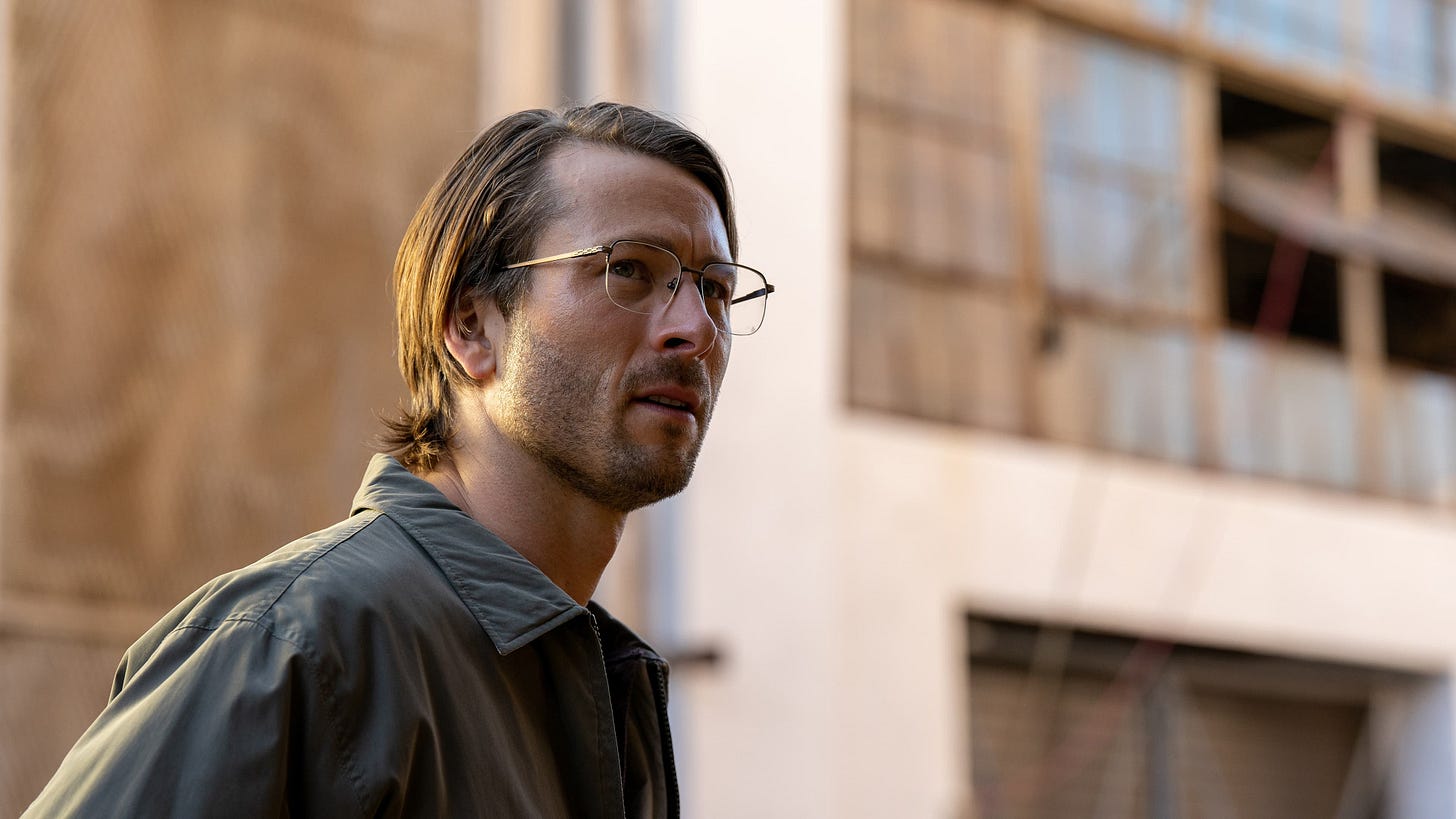Weekly Watches: June 12, 2024
Sharing Our Recent Discoveries: Weekly Watches with 100 Movies Every Catholic Should See
Top Gun Maverick (2022)
Directed by Directed by Joseph Kosinski, starring Tom Cruise and Miles Teller
By Zach Smith
I have seen Top Gun: Maverick 10 times. Eight of those viewings were in theaters. Six of those in IMAX. I am beyond tempted to just leave my brief review at that and walk away. What more of an endorsement can I say beyond that? And honestly, considering how explosive it was at the box office in 2022 (the movie that saved the movies, as many proclaimed it), you have probably already seen it anyway. But, let this be an invitation and a reminder that it is time to watch it again. Top Gun: Maverick just celebrated its second anniversary a few short weeks ago. When it was first announced, there was of course a high level of interest. The original Top Gun was one of the defining movies of the 1980s — a sun and sweat-soaked blockbuster that made Tom Cruise a star. But there was just as much cynicism around the prospect of a sequel nearly 30 years after the original. Really, another legacy-quel? Tom Cruise is really going to get in the cockpit again? Do we really need a sequel to Top Gun? Oh, my friends. Did we ever. The movie, completed in 2019, was held back for two years due to the pandemic, with Cruise insisting it be saved for movie theaters. He knew he had something special on his hands.
Top Gun: Maverick is that rare modern blockbuster that reminds us how thrilling and how gripping movies can be — from the innovative filming of the aerial dogfights, showing us air combat like we have never seen before, to the warmth of the more intimate moments. Cruise’s favorite collaborator, Christopher McQuarrie, makes the screenplay tighter and more emotionally involving than it has any right to be, grounding the action in character and plot. As one character says, “it’s not the plane, it’s the pilot.” Thanks to Cruise, McQuarrie, director Joe Kosinski, and the rest of the cast that became stars in the aftermath, we care about those pilots far more than the, admittedly, very cool planes. There is much more that can, and should, be said. About the filmmaking (the editing! The cinematography!). About the performances. About how this improves on the original in every possible way. But that is far another time. Just go watch Top Gun: Maverick again. Be reminded how exciting movies can be when they are made right.
Howl’s Moving Castle (2004)
Directed by Hayao Miyazaki
By
“No matter your state, life is worth living” is the message of the visually stunning and cinematically engaging Studio Ghibli staple Howl’s Moving Castle. Inspired by Diana Wynne Jones’ book of the same name–which I simply can’t recommend enough. It’s effortlessly funny and wonderfully written–this film takes hold of some of the more existential and dramatic points of the book and explores them in classic Ghibli fashion. (Which is to say, this film boasts one of the most recognizable and popular Ghibli soundtracks as well as gorgeous visuals that set the standard on the word “aesthetic”). The film balances dreamy whimsy with gritty reality as a fantastical love story is continually interrupted by war and witchcraft. Despite the hardships, moments of contentment and peace pervade the runtime, granting this film, like many other Ghibli works, the undeniable status of a ‘feel-good’ watch.
Protagonist Sophie Hatter finds herself tangled in a complicated web when she accidentally makes herself the target of the terribly jealous Witch of the Waste. Cursed and transformed into an old woman, she leaves her hometown and finds herself in the company of the Wizard Howl and his moving castle. The characters are memorable, lovable, and utterly fairytalesque. The movie lingers on the slow and beautiful moments in life in the same breath that it slams the gas on the plot and raises the stakes sky high (literally). Fun, funny, beautiful, soothing, exciting, and enjoyable, it’s a great movie to try out for the first time, and an even better movie to revisit.
Hit Man (2023)
Directed by Richard Linklater, starring Glen Powell and Adria Arjona
By
Richard Linklater has a pretty diverse filmography, ranging from highbrow romances to semi-autobiographical coming-of-age flicks to comedies verging on the screwball variety. With his latest flick, 'Hit Man,' the idea actually came from his friend (and the lead actor of this movie) Glen Powell, who shot him an article he had read about one real-life Gary Johnson, a college professor turned undercover cop in New Orleans. The result is a wholly entertaining summer movie that's more clever than anything else out right now with a good amount of heart to boot. Glen Powell absolutely dominates this film with his comedic chops and makes this one a must-see. Now streaming on Netflix!
Note: Viewers should be aware that there is some sexual content around the middle of the movie.
Walkabout (1971)
Directed by Nicolas Roeg
By
Australian New Wave is a largely neglected film movement in my repertoire that I hadn't really paid attention to until recently. Yes there is Mad Max of course, but I became interested in approaching it as one would approach say French New Wave, and started at the beginning. Known for its grittiness, this first entry into the film movement is as equal parts gritty and ambitious, and has me interested to explore further into this small rabbit hole, as well as the filmography of Nicholas Roeg.
Walkabout is ultimately a survival film. It is about two children who are forced to survive in the Australian outback as a result of their father's attempted murder of them/ suicide. It's quite an extreme way to start out and frankly quite haunting, leaving the viewer with more questions than answers. As the film continues, it becomes evident that it is a more slow pace and interpretive, rather than a straight forward survival. This journey is filled with gritty and poignant imagery that more so reminds me of experimental documentaries such as Koyaanisqatsi, where the filmmaker tries to convey complex ideas and propositions through quick cuts of images with little to no dialogue. This was not a style of filmmaking I was expecting from a small film like this, and it does pull it off for the most part.
I would be remiss if I did not mention the film at times does feel slightly empty. While it is short in runtime, there are some points where there doesn’t seem to be a whole lot going on, as would probably be in the case of being stranded in the outback. The film also seems to be perhaps inconclusive, as what it is trying to say can be quite mysterious. There is also a fair bit of nudity, though not done with exploitative purposes, it may be uncomfortable for some.
The real antagonist of the film seems to be not the environment as it would be in most survival films, but rather apathy and indifference. Without giving too much away, there comes a point in the film where certain events transpire simply through a lack of caring or a desire to understand. While cultures across the world have varying social structures, expectations, and customs, what crosses that is empathy and kindness.
While Walkabout may offer more questions than answers by the end, it is still a worthwhile experience to behold, especially with its powerful imagery, unique editing choices, and its openness to interpretation. It is a film I will be thinking of for a while, and while it's not perfect it does offer a valuable contribution to the art form, and I will continue my investment into both the filmography of Nicholas Roeg and Australian New Wave.














